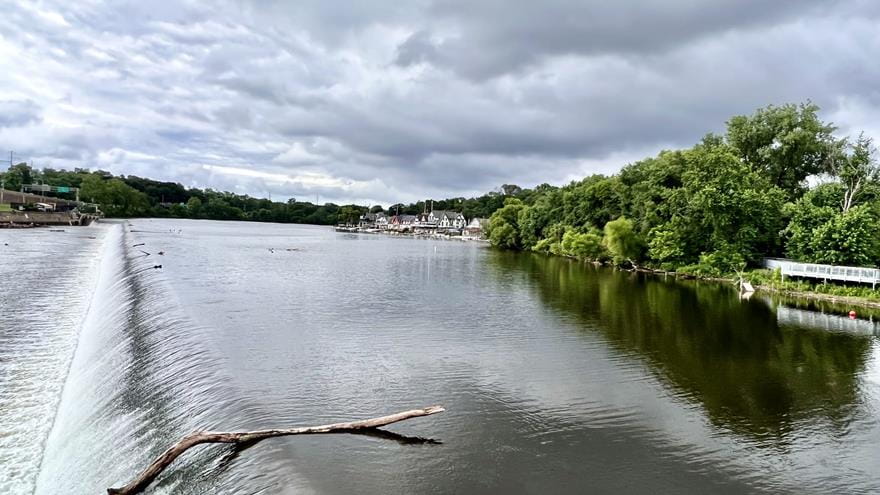Drexel Study Projects More Water Shortfalls in Schuylkill Watershed in Next 20 Years Due to Climate Change

Research out of Drexel University’s College of Engineering suggests that over the next two decades people living in the Schuylkill Watershed, which includes Philadelphia, could experience as many as 82 more days of water shortfalls due to localized weather impacts of climate change. The projections, which account for changes in population, land use, and climate, indicate that — due to more frequent extreme weather events associated with climate change — the watershed may only be able to meet demand about 67% of the time, a drop of 22% from its current reliability.
Published in the journal Water, the paper is the first to look at the compounding effects of climate change and land use and land cover changes on the natural processes that replenish the Schuylkill watershed. The reductions in streamflow and groundwater stores could equate to drought-like conditions where there will not be enough water to meet the region’s water demand for drinking, irrigation, transportation, energy generation, recreation, and sustaining aquatic ecosystems, according to the researchers.
“The gap between available water and demand is expected to require difficult tradeoffs,” said Mira Olson, PhD, an associate professor in the College of Engineering and principal investigator of the study. “Our current resource management practices do not account for increases in the number of extreme precipitation events coupled with population growth and a related shift in land cover that will result in more runoff — rather than water retention.”
Using a mathematical modeling environment programmed to simulate streamflow based on current watershed management policies, the research team, which included Patrick Gurian, PhD, a professor in the College of Engineering, and former students Achira Amur, PhD, now a post-doctoral researcher at Villanova University, Suna Ekin Kali a doctoral student at Luleå University in Sweden and Lena Champlin, PhD, a post-doctoral researcher at Boston University, pulled in soil and land cover data from the U.S. Geological Survey and regional precipitation models from the World Climate Research Programme to make its projections.
After successfully recreating the hydrological dynamics of the Schuylkill watershed in the modeling environment, the team could then change various inputs — from greenhouse gas emission scenarios to population growth in cities and suburbs and their resulting land use changes — to simulate the effects of future climate conditions on the area’s water supply.
Perhaps counterintuitively, the variable that caused the largest increase in projected water shortfalls was an increase in extreme precipitation events. The researchers explained this is because the soil and land cover within the watershed limit how quickly water can be absorbed and how much can be stored at one time. So, while steady rain over a long period of time can replenish a watershed, downpours result in water runoff that is not captured and stored.
Unfortunately, such an uptick in extreme weather events coupled with less precipitation overall during warm seasons, is precisely what climate data, localized from the Intergovernmental Panel on Climate Change, is projecting for the Philadelphia region from 2020 to 2040.
What this all means is that water management authorities may need to adjust the policies that govern when and how much water is released from reservoirs to satisfy downstream demand in the watershed area.
“Watershed management requires maintaining a careful balance between the amount of water stored in the ground and natural bodies of water and the amount intentionally retained and released from reservoirs to make up for extended dry stretches in the hydrological cycle. All of these are subject to substantial uncertainties,” Gurian said. “For this reason, we considered multiple climate models, emissions levels, and development scenarios.”
These stretches, the authors note, could result in more frequent low-flow conditions in streams and bodies of water which, coupled with higher temperatures, would result in more evaporation, further exacerbating the problem and requiring management interventions.
“Our current management policies are based on the historical precipitation patterns we’ve experienced over the last 100 years or so, but in just a couple decades that weather is going to be very different and it’s going to require a rebalancing of the system,” Champlin said.
The results of the study are similar to projections made and conditions already being experienced across North America, including the effects of development and extended drought conditions causing dangerously low levels in reservoirs that serve much of southern California, Nevada and Arizona. While the effect on Philadelphia may not be as dire, the authors suggest that their study represents enough of a warning to justify taking a closer look at the region’s water management strategy.
“This finding and this type of modeling is increasingly important as we’re seeing watershed crises unfold in real time across the country,” Amur said. “While climate change is a problem that needs to be addressed on a global scale, understanding its future impacts at a regional level gives us the opportunity to make preparations that could mitigate some of these water shortages and other challenges associated with climate change.”
The next steps for this research, the authors suggest, should involve modeling development that includes green infrastructure and incorporates more detailed data on future climate and land use projections. They would also recommend improving future models to incorporate regional differences in population growth trends to provide a higher resolution picture of the future of the watershed.
"Our findings provide a roadmap for what lies ahead,” Kali said. “To secure the Schuylkill Watershed's ecosystem services, we must not only adapt our practices but also advocate for collaborative efforts in system and policy adaptation for a more resilient and sustainable future.”
This research was funded by the William Penn Foundation through the Academy of Natural Sciences of Drexel University.
Read the full paper here: https://www.mdpi.com/2073-4441/15/20/3666